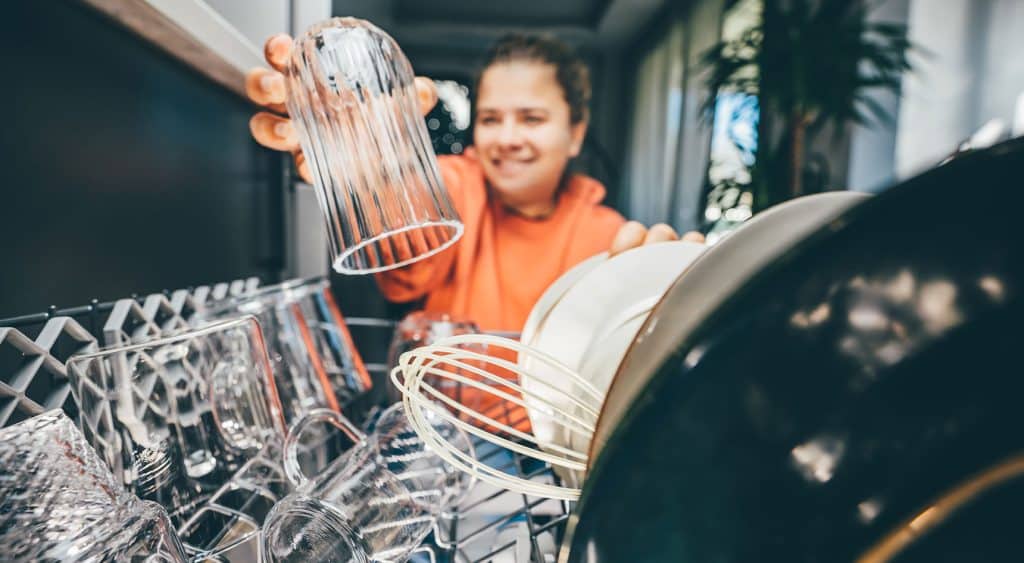3 kitchen energy-saving hacks

Kitchens are the hub of many modern homes. They’re a place to gather and discuss the day’s events or socialise with friends while you prepare a delicious meal.
Kitchens are also where you can run up your energy bill if you’re not careful, but we have three simple ways to help you save money.
Focus on the fridge
A fridge can use up to eight per cent of your household energy, depending on its size, age, energy rating and location. To improve its energy efficiency, keep your fridge in a cool area, with a gap of 5–8cm around the sides, back and top. If it’s in a warm spot, it uses more energy to keep cool, so avoid placing your fridge near the oven or in direct sunlight.
A second fridge in a hot shed will use truckloads of energy, especially if it’s an older model, so perhaps it’s time to consider whether such a convenience is worth the expense. Clean your fridge’s door seals and coils regularly and make sure the door shuts properly (you can do this by putting a sheet of paper in between the door seal and the frame to see if it sticks).
Keep your fridge temperature between 3C and 5C and your freezer between -15C and -18C to balance food safety and energy efficiency.
If you’re buying a new fridge, make sure it’s the right size for your circumstances. Find a fridge that won’t be too full or too empty for maximum energy efficiency. It should have about 20 per cent of free space. Always check the fridge’s government-regulated Energy Rating Label before you buy – the more stars, the more energy efficient it is.

Wash wisely
Imagine life without dishwashers – urgh! Dishwashers are a modern marvel and they’re more energy efficient than washing dishes by hand. But convenience costs money, so make some adjustments to cut your power bill.
Only run the dishwasher when it’s full, although don’t overfill it or the dishes won’t wash properly. Dishwashers use a fixed amount of water and energy no matter the load, so when you run one that’s half empty you’re using the same amount of energy to wash fewer items, which is wasteful.
Get to know your dishwasher. Study the owner’s manual and use trial and error to find out which program will do the job. Try using the one with the lowest temperature, such as the eco or energy-saving cycle. If you’re not in a hurry, and your dishwasher pops open during the drying cycle, switch it off and open the door so the dishes can dry naturally.
Avoid pre-rinsing your dishes (it’s usually unnecessary). Scrape off any food scraps then place the dishes in the dishwasher.
Keep the filter clean and buy the right dishwasher powder, liquid or tablets for your model. The most expensive aren’t necessarily the best.
And remember, if your energy plan has a time-of-use tariff, run your dishwasher during off-peak times (12am—6am) or when the ‘shoulder rate’ applies (10am—4pm) when energy prices are cheaper.
Cuppa cost savings
An electric kettle is essential for making a nice hot cup of tea or a plunger coffee and it’s quicker and cheaper than boiling water on the stove. But if you overfill the kettle, those few cuppas each day will make a difference when it comes to your power bills.
Out of habit, many of us completely fill the kettle each time we boil it. Instead, think about how much water you need and only fill the kettle to that level (or to the minimum line if your appliance has an indicator).
Clean and descale your kettle regularly so it remains efficient when you’re boiling water. The limescale acts as an insulator on the heating element, meaning it has to work harder to transfer heat to the water. Place a few lemon slices in the kettle and fill it with water before boiling it. Let the mixture sit for 15 to 20 minutes, then pour it out, rinse with fresh water and boil it again. A half water/half vinegar solution is also worth a try.
One final tip
When you’re cooking or reheating food, using a microwave or air fryer is much cheaper than an oven. Read our article here for more energy-saving tips.

